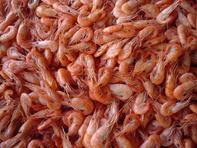History of Prawn Farming in South Africa
Early prawn research in South Africa, in the 1970s, was done by the Amatikulu Prawn Research Unit and funded by the Fisheries Development Corporation of South Africa.

The prawn research focused on both the giant river prawn and Indian prawn. Aspects relevant to commercial prawn farming were investigated. This included the production of algae for larval feeding, prawn larval culture, juvenile and adult prawn feeding and growing out requirements of prawns.
Amatikulu Prawns (Pty) Ltd was established in 1981, originally with the intent of farming with M. rosenbergii, the giant river prawn imported from Mauritius.
Commercial prawn farming by Amatikulu Prawns (Pty) Ltd initially started with Penaeus monodon or giant tiger prawn but later the farm changed to the production of Fenneropenaeus indicus or Indian prawn due to better spawning. The only endemic prawn to Southern Africa is the Macropetasma africanus also called the ‘surf shrimp’ or ‘swimming prawn’ and is a non-commercial species.
The ‘Prawn Interest Group’ was formed at the University of Natal Durban in 1996. From this, the ‘Prawn Fisheries and Development Association’ was gazetted in 1998
Harvesting and Processing of Prawn
Both the processing of the prawns and prawn feed production was done on the Amatikulu site. The most important aspect of shrimp harvesting is maintaining HACCP standards. This requires very controlled post-harvest handling and cold chain, maintaining product temperatures at 0°C. The prawns would be starved for at least three feeds before harvesting, whereafter ponds were harvested three to four times to complete.
Production ranged from 1.7 tonnes to over 7 tonnes per hectare. Product was mostly sold as head-on. Giant mud crab or Knysna crab was considered part of the prawn crop and also sold. This crab, Scylla serrata, is common in bays and estuaries along the South and East coasts of South Africa. Studies in 2004 found that these crabs were easy to spawn, maintain and mature in captivity.
Challenges in Prawn Farming
In South Africa, prawn farming is only viable from September to April. This means that a prawn farm needs to be an integrated business combining other aquaculture species such as dusky kob to remain productive during the South African winter.
Commercial Prawn Farming
Commercial prawn farming was conducted in the KwaZulu-Natal Province from 1989 to 2004. A commercial shrimp farm, Amatikulu Prawns (Pty) Ltd 120 km north of Durban, owned two sites, Amatikulu Prawns and Mtunzini Prawns in total comprising 34 ha of ponds. The farm also had two hatcheries, a HACCP-certified processing plant and an aquaculture feed mill.
The farms were commercially successful until 2000 when international prices declined and no funding could be secured for expansion of the farms. In 2004, the farm closed when the South African market became saturated with cheap head-on tiger prawns from India.
New Prawn Farm for South Africa?
In 2016 the Departement of Agriculture, Forestry and Fisheries (DAFF) planned to establish an Aquaculture Development Zone (ADZ) on the site of Amatikulu prawn farm. To this end, an Environmental Impact Assessment is underway (2019).
According to DAFF ‘the farming of indigenous and temperate water species with a production output of 20 000 - 30 000 tonnes is envisaged’. Infrastructure such as access roads, electricity, sea water pipelines, pump station, reservoir, and fencing will be established by the department.
The final scoping report, prepared by Nuleaf for DAFF, stated that ‘aquaculture facilities will be used for the farming of a range of species. This could include dusky kob, barramundi, scallops, sea cucumbers, marine and freshwater ornamental fish and ornamental plants, tilapia, catfish and Nile crocodile.’
‘‘Prawns are not included in their zone anymore. They were considered but due to the fact one can only get a maximum of two production cycles at the site and other environmental considerations they were excluded.’'
By Marinda Louw
For bulk or export enquiries please use the enquiry link below.